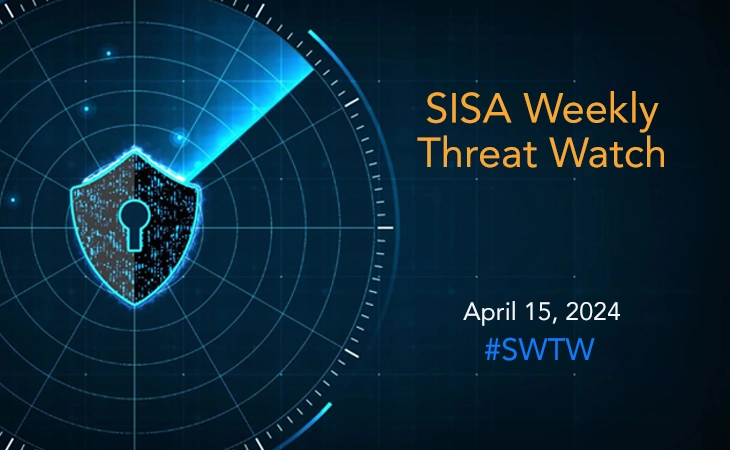- June 13, 2022
Reinforcing Your Enterprise’s Data Security with Data Discovery and Classification

Data is the most critical asset for any organization, and businesses cannot ensure its security if they are unaware of its existence and purpose. Challenges like perimeter-less networks, the constant movement of data, and evolving technologies make it complex for organizations to track and manage the storage and usage of data to secure it from unwanted leaks and breaches. A total of 4,145 breaches were recorded worldwide in 20211, exposing over 22 billion records. More than 33 billion records will be stolen by cybercriminals in 2023 along, an increase of 175% from 20182. Expecting a further surge in these numbers in upcoming years, countries across the globe have started taking measures to strengthen their data security policies.
Data Security: One of the many essential methods of evaluating and reducing the risks of malicious attacks, data security involves protecting data from unauthorized access or data theft. Data security refers to a set of controls or techniques that ensure the maintenance of confidentiality, integrity, and availability (the CIA triad) of data throughout its lifecycle. It also improves the organization’s visibility into its sensitive data and helps determine controls to facilitate complete Data Protection.
Common Barriers – What Puts Data at Risk?
The expansion of attack surfaces due to the proliferation of data and Internet of Things (IoT) devices have made data security and monitoring a complex task for organizations. In addition to that, multiple data security and privacy regulations constitute longstanding provisions, non-compliance of which can lead to reputational as well as monetary losses. Some of the common barriers to effective data security are listed below:
- Negligence and Over-Exposure: Accidental exposure of sensitive data due to human error has become one of the most common causes of successful data breaches. Mishandling of valuable data or lack of awareness about security policies can result in sensitive data being exposed and easily accessed by hackers.
- Malicious Attacks: Phishing emails, Ransomware, SQL injection, and other social engineering attack techniques are some common ways for attackers to gain access to an organization’s sensitive data and perform malicious operations by exfiltrating critical information.
- Insider Threats: It is not enough for organizations to safeguard sensitive data just from the external attack vectors, threat may also reside inside the organization. A current or former employee who has authorized access to critical assets or data can abuse it either intentionally or by accident.
Role of Data Discovery and Classification to Improve Data Security
To ensure effective data security, organizations must have complete visibility over the data flowing across applications, servers, endpoints, email servers, databases, and cloud platforms to first understand its type, purpose, and location. Once identified, the stored data must be classified using various tags to determine the criticality of each one of them. This is where data discovery and classification solutions come to play. Such tools enable businesses to identify sensitive data and take proactive steps to assess and remediate vulnerabilities.
Data discovery and classification tools not only help determine the access to data but also assist in understanding the contextual factors like sensitivity, users, devices, location, and potential threats to make accurate security decisions that support evolving business requirements.
Data lost in the advent of a successful data breach usually puts the reputation of an organization at stake. With effective data discovery and classification solutions, organizations can address the concerns of unauthorized access as well as insider threats by taking necessary remediation actions to encrypt or quarantine sensitive data to secure locations. This very first step restricts access to only authorized users and protects valuable data even if it gets breached.
Lastly, and most importantly, regulations like General Data Protection Regulation (GDPR), HIPAA (Health Insurance Portability and Accountability), CCPA (California Consumer Privacy Act) and Payment Card Industry Data Security Standards (PCI DSS) require organizations to stay aware of the data flowing across the network. Data discovery and classification tools help regulate the data governed by such regulations to implement the required controls and achieve compliance.
Enhance Data Security by Integrating SISA Radar with DLP and SIEM
Effective data security requires a holistic view of the organization’s security posture to protect the data, prevent breaches and meet regulatory compliances. Data Loss Prevention (DLP) and Security Information and Event Management (SIEM) solutions play a significant role in monitoring and controlling the flow of data and understanding the correlation between threats in real-time to prevent the risks of data being lost, breached, or misused.
SISA Radar – Data Discovery and Classification tool allows taking a consolidated approach to data security. SISA Radar’s ability to integrate with DLP and SIEM solutions enables organizations to:
- Understand and analyze the data used, stored, and transmitted through one single platform.
- Refine the identification of sensitive information, new resources and new threats to organization’s data.
- Have a deeper insight into the critical locations across the network that require additional security controls to facilitate faster incident response.
- Strengthen organization’s DLP strategies and reduce the risk of unauthorized access to sensitive data.
- Mitigate the risk of data breaches with help of use cases built are based on forensics insights gathered by SISA’s core PFIs.
- Reduce the false positives after every scan thanks to the Intelligent AI/ML algorithm compiled by our forensics learnings.
The information supplemented by automated data discovery and classification allows organizations to quickly identify the unprotected data that could be exposed to data breaches. Enterprises can then take necessary actions to improve their security operations and policies to prevent data loss and ensure compliance. SISA Radar enables organizations to have a comprehensive view of data spread across servers, endpoints, and cloud platforms to protect it at the source, in transit, and at its destination
For a deeper understanding of all the key features and capabilities of SISA Radar, get in touch with our experts. To catch our Data Discovery and Classification tool in action, request a free demo today.
References:
- https://www.securitymagazine.com/articles/97046-over-22-billion-records-exposed-in-2021
- https://www.juniperresearch.com/press/cybersecurity-breaches-to-result-in-over-146-bn
 USA
USA India
India APAC
APAC Middle East
Middle East Global
Global




 Facebook
Facebook Linkedin
Linkedin  Twitter
Twitter Youtube
Youtube








